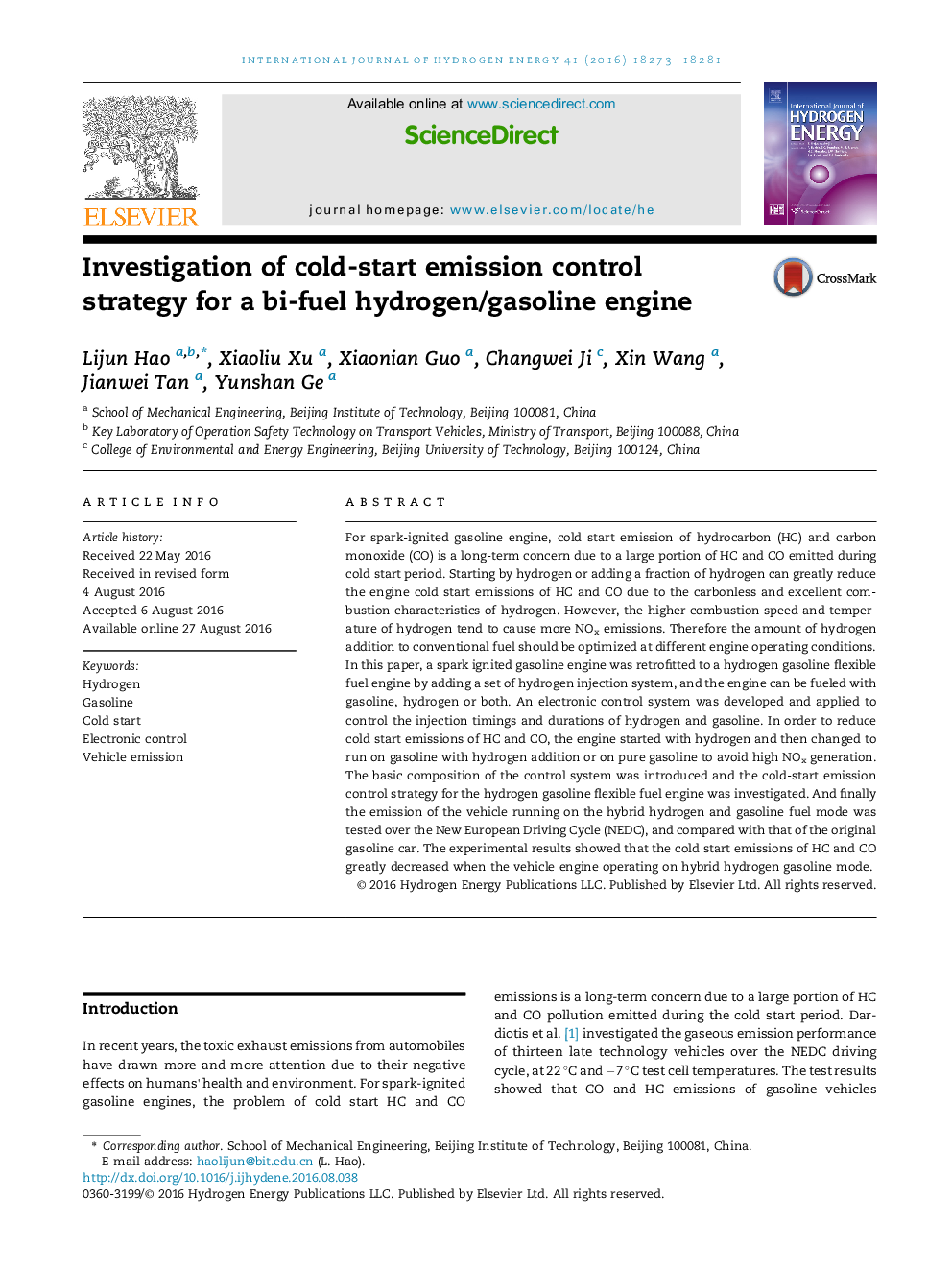| Article ID | Journal | Published Year | Pages | File Type |
|---|---|---|---|---|
| 5147574 | International Journal of Hydrogen Energy | 2016 | 9 Pages |
Abstract
For spark-ignited gasoline engine, cold start emission of hydrocarbon (HC) and carbon monoxide (CO) is a long-term concern due to a large portion of HC and CO emitted during cold start period. Starting by hydrogen or adding a fraction of hydrogen can greatly reduce the engine cold start emissions of HC and CO due to the carbonless and excellent combustion characteristics of hydrogen. However, the higher combustion speed and temperature of hydrogen tend to cause more NOx emissions. Therefore the amount of hydrogen addition to conventional fuel should be optimized at different engine operating conditions. In this paper, a spark ignited gasoline engine was retrofitted to a hydrogen gasoline flexible fuel engine by adding a set of hydrogen injection system, and the engine can be fueled with gasoline, hydrogen or both. An electronic control system was developed and applied to control the injection timings and durations of hydrogen and gasoline. In order to reduce cold start emissions of HC and CO, the engine started with hydrogen and then changed to run on gasoline with hydrogen addition or on pure gasoline to avoid high NOx generation. The basic composition of the control system was introduced and the cold-start emission control strategy for the hydrogen gasoline flexible fuel engine was investigated. And finally the emission of the vehicle running on the hybrid hydrogen and gasoline fuel mode was tested over the New European Driving Cycle (NEDC), and compared with that of the original gasoline car. The experimental results showed that the cold start emissions of HC and CO greatly decreased when the vehicle engine operating on hybrid hydrogen gasoline mode.
Related Topics
Physical Sciences and Engineering
Chemistry
Electrochemistry
Authors
Lijun Hao, Xiaoliu Xu, Xiaonian Guo, Changwei Ji, Xin Wang, Jianwei Tan, Yunshan Ge,
